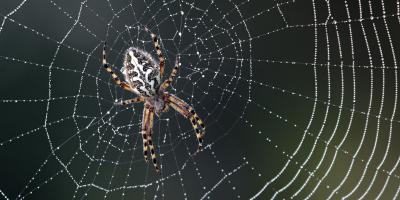How to Rid Your Pantry of Flour Beetles

As the weather changes and the temperature drops, you may start to hear some buzzing inside of your house. Whenever the weather gets colder, pests invite themselves into your home for sanctuary and survival from the elements.
There are many pests that seek access to your home for food, but their idea of “food” often differs from our idea of “food.”
For instance, we know there are insects that are invested in your trashcan. To them, this is an oasis you and your family provided for them. Or perhaps, the plants in your house gave them a reason to never leave. When they have their favorite snacks inside, why go back outside?
Some bug’s palate’s are restricted wood while others prefer to feed off of us. Others, like the flour beetle, share more with us than we realize when it comes to preferred tastes.
A Common Palate
Flour beetles take refuge in our cabinets and dine on our dried grocery items. That's right, everything from cake mix to pasta, dried milk, to grains, these beetles will fully indulge themselves. To identify these bugs, it is important to know they will survive the winter by hiding in warm places around heat sources in your house. Because of this and the fact that an adult red flour beetle is only ⅛ of an inch, they are able to survive for more than three years. This is a long time to infest your cereal and crackers!
While they’re not the only pest that eats what we eat, they are one of the few that also use it as a shelter source.
Since your dried grains make a nice home for these beetles, if they go undetected they will spend their whole life cycle in a cereal or pasta box.
You see where this is going… They do more damage to the food than just eating it. Other ways the flour beetles damage food is by their fecal pellets, foul-smelling discharge, and, ultimately, their dead bodies. To top it all off, the smells and carcasses encourage the growth of mold in and around your pantry.
How Did They Get There?
Red flour beetles contaminate more food than they actually eat. Once a food source that is destroyed is discovered, it is best for the whole thing to just be thrown away. They can get into just about anything, open packages, plastic, thin cardboard, or foil wrapped packages. Once they infiltrate your food, they will quickly multiply and live undetected because of their size until you are dealing with a full-fledged infestation.
Typically, flour beetles are brought into your home from the grocery store. Stocked food from the grocery store could potentially already have the beetles inside of them. With just a few of them in your dried fruit, maybe they went undetected and have been ingested by you and your family. No need to worry if this has happened because…
- Flour beetles are not dangerous. They are interested in our food, not us. We are not on their menu.
- It’s very rare that you’ll get sick by accidentally ingesting them.
- You don’t usually need a pro to successfully eliminate them. It is quite easy to eradicate and clean up so they are gone and the next generation will not find their way to your rice.
The Clean-Up and Prevention Process
In order to clean out your pantry, start by throwing any infested food items away. Vacuum any cracks or crevices in your pantry or spice cabinet. Keep up with spills and crumbs that may build up over time. Dispose of your infested food garbage as soon as possible, and keep it outside until you do (remember they can chew through plastic!). Any item that you are unsure of as a target for these beetles, keep safe in your freezer!
Next time you shop, make sure you inspect the food packaging. Do not purchase if there is any hole, tear, or crumbs around the item. Also double check the date to ensure it is as fresh as possible.
When you get home, package your food in an air-tight, bug free container. This will lengthen the life of your dry ingredients and keep the beetles away. They like to attach themselves to boxes and paper packages, so the faster you remove those the better chance you have at eating the food you bought before the beetles do.
Still have questions about these curious red flour beetles? Give us a call!



